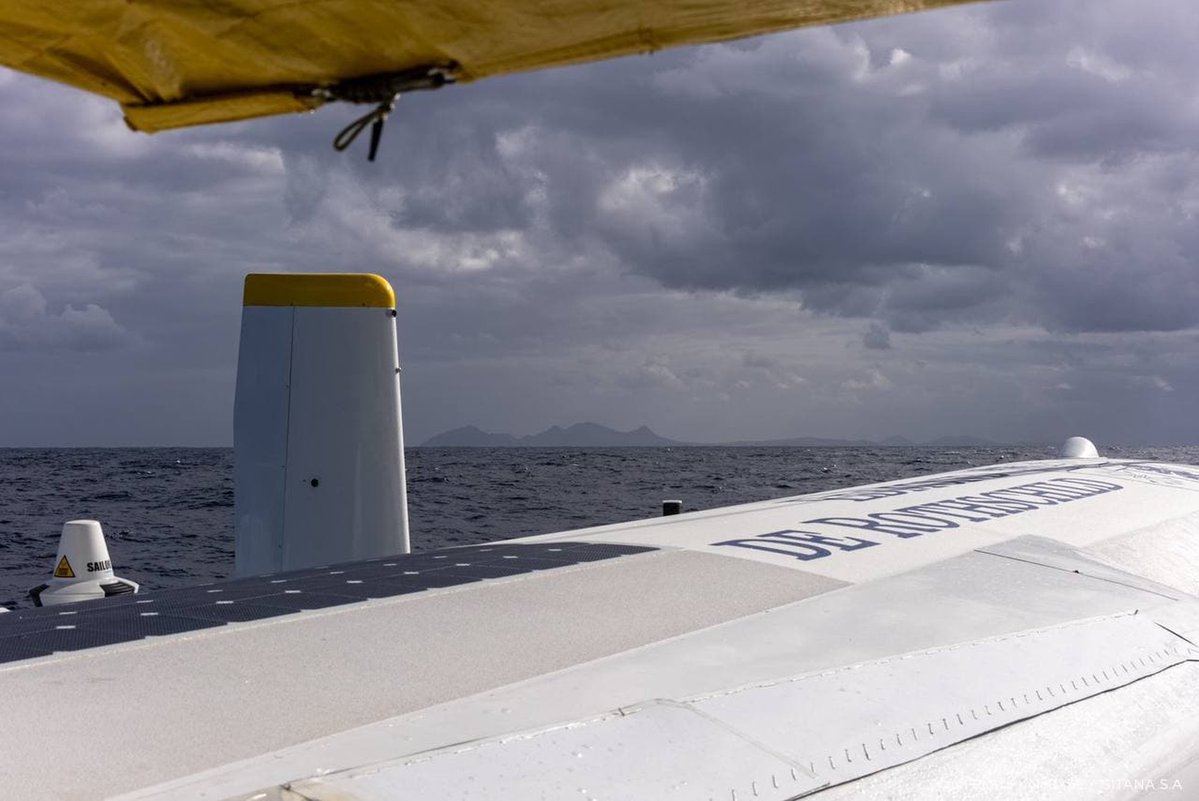At the 18:00 UTC position report this Monday, the Maxi Edmond de Rothschild had covered 1,313 miles over the ground since leaving Ushant on Sunday at 01:33 UTC. Posting an average speed over this distance of 32.7 knots, it is a clear indication that the crew of the 32-metre giant is already very much in tune with the fast pace required by a record like the Jules Verne Trophy. After a bracing phase during the passage around Cape Finisterre, where the sailors had to contend with a solid breeze of over 30 knots and chaotic seas, conditions were becoming calmer this Monday afternoon as they skirted the Portuguese archipelago of Madeira. Charles Caudrelier, Franck Cammas and their four crew currently have a 65-mile lead over the record.

Finisterre’s teeth rattling conditions
The conditions that were reigning along the length of the Iberian peninsula were important factors in the choice of departure slot for this second Jules Verne Trophy record attempt, as Marcel van Triest explained: “There were two main reasons why Franck, Charles and I chose to set sail on the trailing edge of a North Atlantic window. The first was to do with avoiding the worst of the stormy conditions along the Spanish and Portuguese coastlines. That particular sector was still fairly bracing and full-on for the crew yesterday, so if you were to imagine that with an additional 10 knots, you can see that it wouldn’t have been a reasonable way to kick off a round the world.” However, more than the wind, it was the messy sea state and the waves it generated, which most hampered the Maxi Edmond de Rothschild’s progress. In one of the waves, which was doubtless somewhat beefier than the others, one of the forward windows of the cuddy cracked slightly. It’s nothing serious and this slight damage was quickly repaired by the boat captain and crewman David Boileau, but it gives you some insight into the violence of the passage around the north-west tip of Spain. Despite that, yesterday afternoon the crew treated itself to a top speed of 49.2 knots, a record for the boat, to kick off its planetary loop in style!
Skirting a ridge of high pressure
Saturday off Ushant, Sunday off Spain, Monday off Madeira… each day heralds another destination on the Jules Verne Trophy course. However, for the men of the Maxi Edmond de Rothschild, there’s no time for any sightseeing. Indeed, the six sailors have to respect a very precise schedule and they have an appointment with the South Atlantic that they can’t afford to miss! Aboard the latest Gitana, the crew is changing watch every two hours to get the most out of their fantastic flying maxi-trimaran. Since the start, the weather has called for numerous gybes and it’s not over yet! In fact, according to the latest routing sent across by Marcel Van Triest, there are more in the pipeline over the coming hours. It’s worth pointing out that a manœuvre like a gybe requires the whole crew to come up on deck so as to optimise the time spent on the task and the slight stalling that has been allowed for.
Right now, the wind shadow created by the Portuguese archipelago is very significant. On the grib files, we can see the scars of this phenomenon over 230 miles to its south and the area of light wind almost extends out to the neighbouring Canaries archipelago. Suffice to say that in this configuration, the passage to windward of Madeira was not an option, rather it was an obligation. For all that, the route adopted by the Maxi Edmond de Rothschild is far from simple due the ridge of high pressure, which is shifting eastwards and is set to block the route to the south and the trade wind of the southern hemisphere from tomorrow.
“It’s a fairly classic weather pattern when you’re setting off on the trailing edge of a window. The low-pressure system, which is situated over the Iberian peninsula, is fading away as it shifts eastwards and the ridge of high pressure is following it. As a result, it is coming our way. In terms of positioning, as well as in anticipation of the next stage of the descent towards the equator, the aim is to be as far west as possible in order to hunt down the shift when the wind veers (from the north to the north-east),” explained Gitana Team’s weather router.
As is always the case at sea, it’s all about finding a balance. In an ideal world you would try to gain southing so as not to get your wings burnt flying too close to the ridge of high pressure, but you also need to gain ground to the west so that further down the track you don’t fall under the influence of the wind shadow created by the Canaries and abeam of the Cape Verde archipelago.


